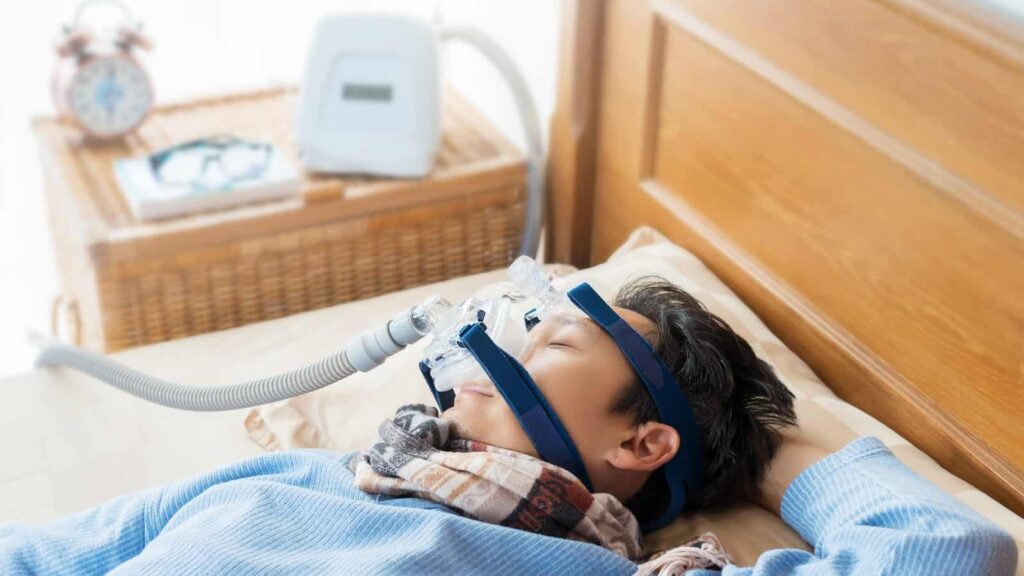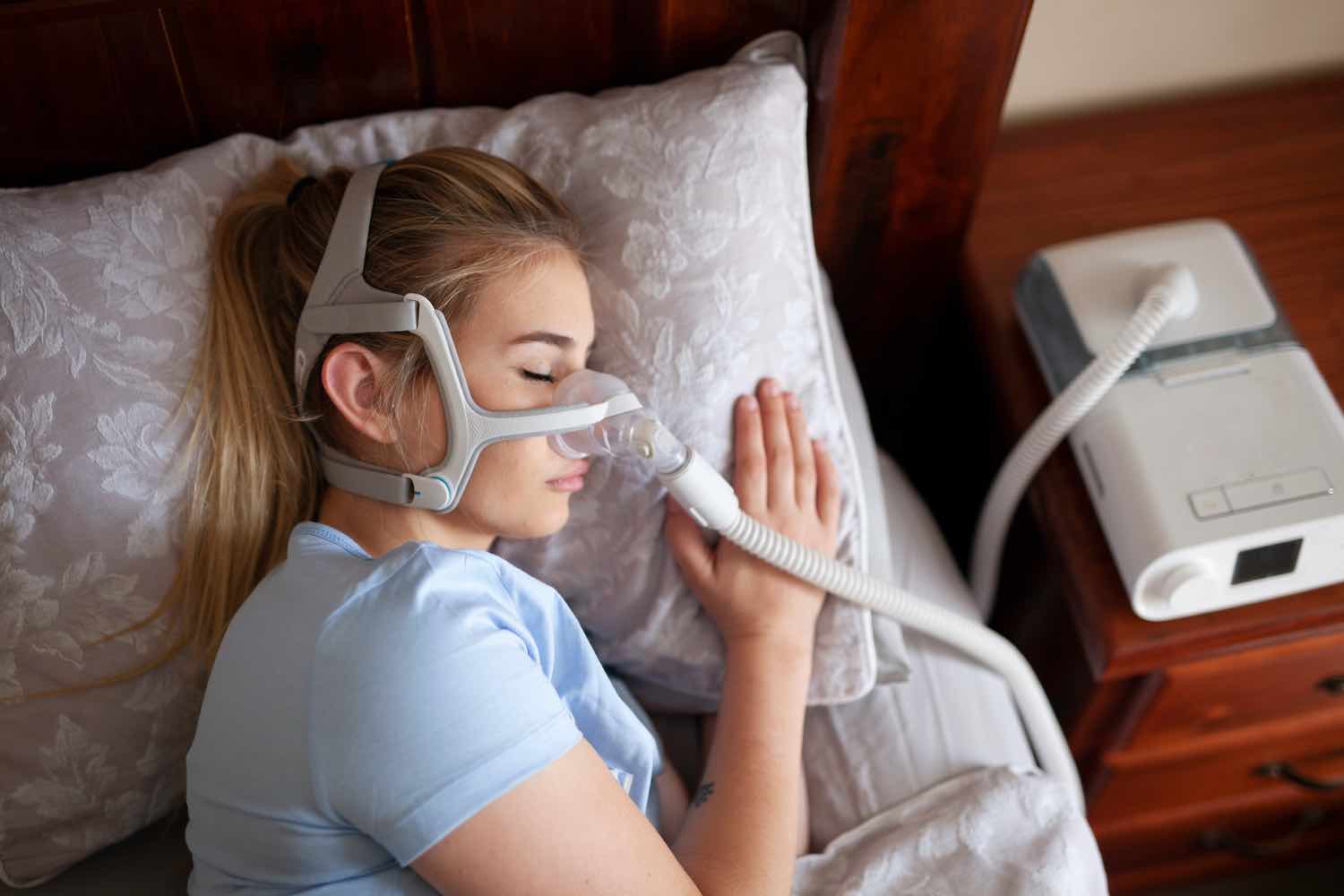There are multiple phases in the diagnosis procedure for sleep apnea, which must be performed by a physician or sleep expert.
Medical History and Examination
An assessment of a person’s symptoms and general health, as well as a physical examination, are usually the first steps before using sleep apnea machine. This is intended to spot sleep apnea symptoms and pinpoint risk factors that can aggravate the disease.
Related: Best Pro Tips for Maximizing the Use of Your CPAP Machine
The existence of symptoms may contribute to the diagnosis and help identify the severity of the disorder, even though testing is necessary to confirm OSA.
Sleep Research
To identify either central or obstructive sleep apnea, a sleep study is required. In a specialist sleep laboratory, an overnight stay is required for the polysomnography, the most reliable kind of sleep research.
Multiple sensors are used during polysomnography to monitor many elements of sleep, including breathing, awakenings, oxygen levels, muscle activity, and sleep phases. An in-clinic sleep study may identify abnormal breathing patterns and distinguish between central and obstructive sleep apnea. Polysomnography for OSA may need one or two visits to a sleep clinic.
Patients19 who are thought to have more severe OSA may choose for at-home testing for the condition. Even though an at-home test may be more practical, a health expert must still evaluate the data. For central sleep apnea, home testing is not done.
Sleep apnea therapies
Reducing breathing disturbances and enhancing sleep are the two main objectives of sleep apnea therapy. Obstructive sleep apnea and central sleep apnea are treated differently.
Obstructive sleep apnea treatments
Most persons with obstructive sleep apnea are treated with positive airway pressure (PAP) therapy. PAP treatment uses pressurized air that is pushed from a machine via a hose and a mask placed on the face to maintain the airway open20.
Continuous positive airway pressure (CPAP) devices transmit an airstream that is always set to the same pressure level as part of a popular kind of PAP treatment. The amount of air pressure may vary with other PAP device types including bi-level positive airway pressure (BiPAP) and auto-titrating positive airway pressure (APAP).
For persons with unique anatomical traits and less severe OSA, there are specialized mouthpiece kinds that keep the jaw or tongue23 in a particular position as a therapeutic option. These oral appliances may lessen snoring and may be favored by persons who have difficulty or discomfort while using PAP devices, even though they often do not improve breathing as much as PAP treatment.

Patients who have tissue blocking their airway may benefit from surgery to remove tissue from the throat and widen the airway. Implanting a device to stimulate a nerve that aids in respiratory control is required for another kind of surgical therapy.
A further aspect of treating obstructive sleep apnea is making lifestyle adjustments to aid with symptom management. These recommendations may include: lowering BMI via weight reduction; engaging in regular exercise, which may lessen OSA symptoms even without weight loss; changing one’s sleeping posture to prevent sleeping on one’s back; and lowering one’s alcohol intake.
Central sleep apnea treatments
The medical condition causing irregular breathing is often the main focus of treatment for central sleep apnea. Treatment for the underlying cause24 may be sufficient if sleep disturbances are modest.
While simultaneously attempting to address the underlying issue, extra therapy may be advised if the symptoms of central sleep apnea are severe or chronic. This can include using a PAP machine to encourage more consistent breathing while you sleep. Additional oxygen therapy or the use of drugs that help hasten breathing are other potential therapies.
Consequences of Sleep Apnea
Sleep apnea can typically be treated well to avoid or cure major consequences, but if the disease is not addressed, it may have adverse implications on health and wellbeing.
Sleep apnea lowers the quality of sleep, and since it has an impact on the body’s oxygen levels, the negative consequences of inadequate sleep are exacerbated.
Because of this, obstructive sleep apnea has been linked to an increased risk of a variety of health issues, such as:
- Pulmonary hypertension, which is high blood pressure in the arteries of the lungs that puts an undue burden on the heart;
- Cardiovascular problems such as high blood pressure, stroke, heart failure, heart disease, and an irregular heartbeat;
- Cognitive issues, such as memory and attention issues; • Mood issues, such as irritation and an increased risk of depression;
- Nonalcoholic fatty liver disease, which is characterized by an increase in liver fat deposits that may cause significant liver damage.
- Surgical problems brought on by anesthesia
The potential risks in central sleep apnea are mostly determined by the underlying medical condition producing breathing problems.

Sleep Apnea in Children
Sleep apnea is frequently linked to elderly people, however it may also affect kids. Obstructive sleep apnea is substantially more prevalent in young persons than central sleep apnea. Obstructive sleep apnea is thought to affect 1 to 5 percent of children30.
Children with OSA may not be as overly sleepy throughout the day as adults with sleep apnea are. They may instead display daytime symptoms including hyperactivity, learning challenges, or behavioral issues.
Similar to adults, children with obstructive sleep apnea often snore. Other nocturnal symptoms, such as sweating, bedwetting, or sleepwalking, may occur in children31. Growth and development issues may also occur in kids with severe, untreated OSA.
Surgery to remove these tissues33 may be an option for therapy since swollen tonsils and adenoids in the throat are a common cause of obstructive sleep apnea in children.
Suffering from sleep apnea
People who have sleep apnea may take practical measures to manage their condition and any possible health repercussions.
· Consult with a doctor frequently: Any persistent symptoms, problems with the medication, or other issues that could necessitate revising the sleep apnea management strategy should be brought up with your health care physician or a sleep expert.
- Take proper care of treatment equipment: Whether using a mouthpiece or a PAP machine, cleaning and maintenance may help you obtain the maximum benefit from your therapy and prevent negative side effects.
- Steer clear of high-risk activities: Those who have sleep apnea should be mindful of the dangers of daytime drowsiness. Driving and using equipment should be avoided when tired, especially for those who have untreated sleep apnea.
- Think about switching positions while you sleep: Although they have not undergone extensive research, specialized items designed to prevent back sleeping may help some individuals lessen the symptoms of obstructive sleep apnea.
- Limit alcoholic beverages: Alcohol consumption reduction may be recommended as part of a sleep apnea treatment program. Even daytime alcohol use may increase respiratory issues at night in those with untreated OSA.
- Explain your sleep apnea to any new medical professionals: People with sleep apnea should explain their condition to any new medical professionals, particularly if they want to start a new medication or have surgery.
